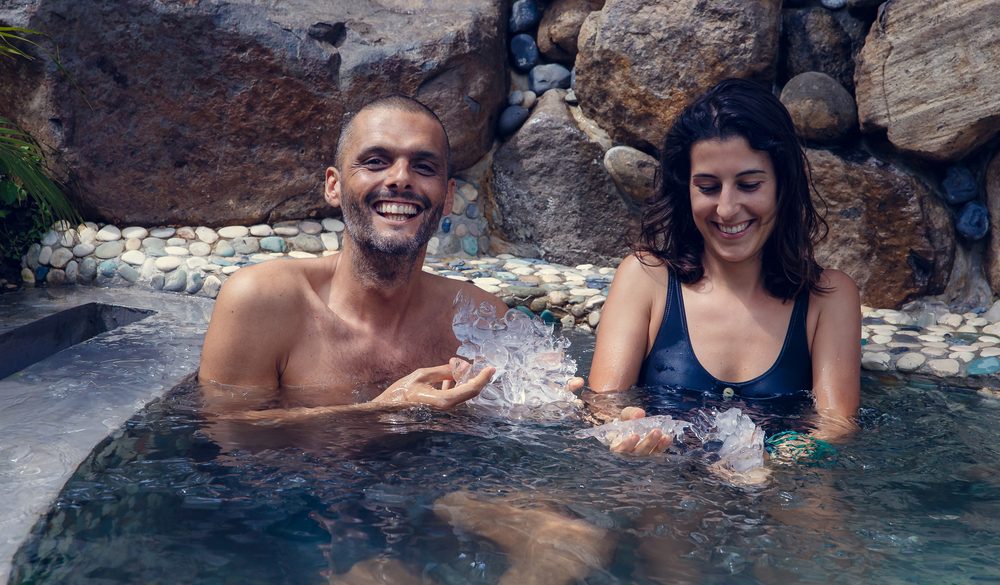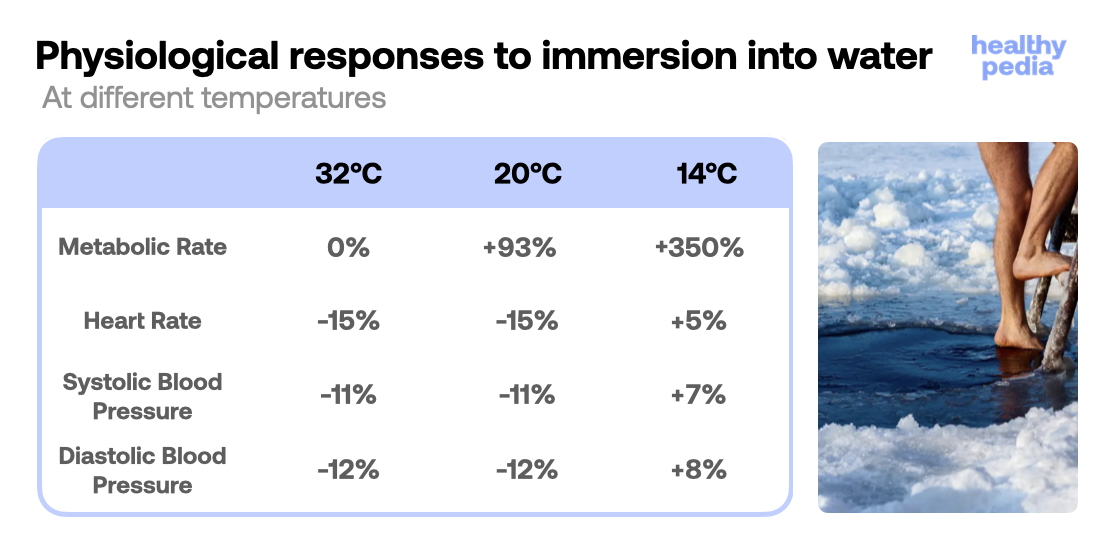Ice plunging is not a new word for the healthy crowd, yet many still overlook this activity. Some think it’s just a fancy way to recover after a workout and some associate it with a heavy phycological challenge.
The truth is, humans have been practising it for centuries and many countries, especially Nordic, keep carrying this activity as a traditional nationwide hobby. One doesn’t have to take cold immersion to the extreme and sit in the icy bath for over an hour, like cold exposure enthusiast Wim Hof or even 20 minutes, like Joe Rogan. People without existing heart problems can explore hydrotherapy and receive the benefits of ice baths by doing it for short periods of time. Let’s take a look at what you might gain if you start doing ice plunging regularly.
Seven benefits of taking ice baths

There are many ways ice plunging affects our bodies, many of which require more research. We are going to be talking about the most prominent and well-researched changes.
1Improves insulin sensitivity
Taking ice baths can be a great way to fight insulin resistance, which can contribute to type 2 diabetes development. That is not a magic trick: icy water triggers the activation of brown fat – a unique organ that burns glucose and fat from your bloodstream. Brown fat uses that ‘fuel’ to produce energy and warm up the body.
This results in improved levels of blood glucose and better insulin sensitivity. Both of these factors can contribute to preventing diabetes, obesity, and other metabolic issues.
2Better metabolic health
Having ice baths can help improve your overall metabolic health. This may happen as a result of improved insulin sensitivity and increased hormone production.
One study involving a group of men examined the result of immersion in cold water (14°C or 57°F). As it turned out, that kind of immersion increases metabolic rate by 350%.
3Better circulation
When your body faces a dangerous situation like being in icy water, the sympathetic nervous system activates the fight-or-flight mode and releases adrenaline. This hormone affects blood circulation and elevates the heart rate dramatically to make you feel more alert and ‘ready to save your life’.
The research shows that during the cold water immersion procedure, the heart rate and systolic and diastolic blood pressure raise by 5%, 7%, and 8%, respectively.
What’s interesting about ice baths is that the hydrostatic pressure activates the parasympathetic nervous system, which is supposed to make you feel calm and minimise the effects of cold shock.
So, in a short term, your body is going to get a boost in blood circulation and increased blood pressure, but in a long term, it is going to become more resistant to stress.
4Decreases muscle soreness and joint pain
There is still not enough scientific evidence of ice bath benefits for muscle soreness and recovery, but in reality, it is a common practice among many athletes and professional sportsmen and sportswomen. They either use ice bath immersion (12-15°C or 53-59°F) for a period of 5–20 min or alternating therapy between the ice bath plunge and tepid water immersion, each lasting 1–5 min.
One review of 17 small trials showed some evidence that cold‐water immersion reduces muscle soreness at 24, 48, 72, and even at 96 hours after exercise compared with ‘passive’ treatment.
A recent study that involved Indonesian men with gout arthritis showed that cold-water immersion improves joint mobility, physical activity, and quality of life. Participants were practicing cold water immersion for 20 minutes/day for 4 weeks and reported a significant decrease in pain.
5Mental balance improvement
Taking an icy bath is definitely a challenge for the mind, but it definitely pays off. According to Dr. Susanna Søberg, author of the book Winter Swimming, people who practice ice plunging report on their improved mental health and elevated mood. This may be happening due to the fact that cold water immersion (below 15°C or 59°F) boosts dopamine levels by up to 250%. At the same time, the levels of the stress hormone – cortisol – tend to decrease in a long term.
Cold water immersion can also help improve mood by increasing levels of norepinephrine, a neurotransmitter that is associated with positive feelings and improved cognitive function.
6Boosts your energy levels
Cold water immersion has been shown to increase levels of adrenaline, which can help improve energy and focus. Such an effect is thought to be particularly beneficial for athletes and people who need to perform high-intensity physical activities. If you need an energy boost before a big event – do not drink countless amounts of coffee, take an icy bath instead. You will feel more powerful and capable of doing anything.
7Makes you more resistant to stress
As we mentioned earlier, for many people taking an ice bath is a challenge. And that is why it can help increase resilience by training the body to adapt to stressors. By practising such an ‘uncomfortable’ hobby you can make yourself stronger while controlling your goals. Then the other problems in everyday life may start to seem less unsolvable. This can be particularly beneficial for individuals who face high levels of stress in their daily lives.

Why taking an ice bath does not have to be extremely hard

The main rule that we have to remember – everything good comes in moderation. This also applies to ice plunging and cold water immersion.
You can get the benefits of this practice even from a short practice, although it should be regular. According to experts, long ice baths can have the opposite effect – the body will adapt to the cold, causing the need to decrease the temperature and increase the duration of the session for the benefits to show up.
Start with a 30-second or 1-minute bath. That could be enough to trigger metabolic processes in your body and make some changes. Then, elevate your practices at a comfortable pace. It is important to build up a tolerance to cold water gradually and to never stay in the water for too long.
Disclaimer

If you have pre-existing problems with your heart health, we do not recommend getting into cold water right away. You might want to discuss it first with your doctor and start the practice slowly with a gradual temperature decline. According to the Royal Life Saving Society (UK), a sudden rise in blood pressure can be fatal for people with a pre-existing heart condition. Each year a number of people who are suspected of drowning, turn out to have had a heart attack.
Fun facts about cold exposure
-
The human body has two ways of warming itself up: shivering and activation of brown adipose tissue (brown fat).
-
The longest duration of full body contact with ice is 3 hr 28 sec. It was achieved by Valerjan Romanovski (Poland) in 2021.
Let’s sum it up

Taking ice baths can bring a plethora of health benefits to your life. First of all, improving the metabolism and insulin sensitivity which can help prevent diabetes and obesity. It can also reduce muscle and joint pain, and work as a good post-exercise recovery method. Taking a cold bath can also boost mental health, improve circulation and blood pressure, and make you stress-resistant and full of energy.
Although, we must mention that cold water exposure is not for everyone, and people with heart health problems should consult with their doctors before trying to practice it. For those who do not have any precautions, taking an ice bath should become a fun activity that comes in moderation.
Hungry for knowledge? Here is more
In this video, Kris Gethin, a famous fitness personality, shares his personal takes on daily ice bath practice benefits while staying in an ice bath 🙂 He also shares his routine and tips on how he does the practice. Kris is a co-founder of the gym franchise and a popular YouTube creator.













